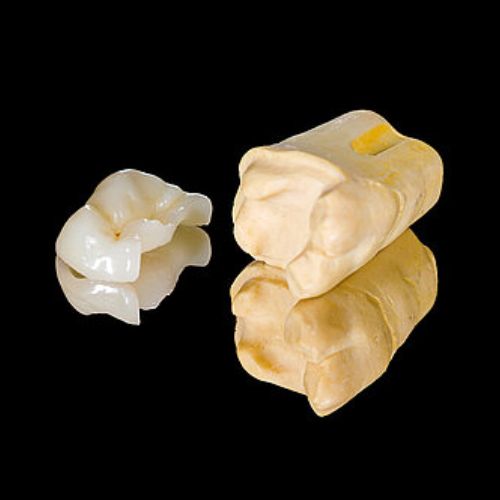Porcelain Inlays
An inlay can be used to fill a cavity. It is normally used in place of a standard filling because the tooth is unable to support it due to decay or damage. An inlay is a less expensive and invasive alternative to a crown.
They are normally placed on the back teeth where they help to restore strength and function enabling you to chew properly.
Your inlay will be placed directly onto the surface of the tooth- fitting within the confines of your other teeth so that it feels comfortable and natural.
A porcelain inlay gives a very natural finish- blending in beautifully with your other teeth.
Gold inlays have been used for many years and have proved very reliable and hard-wearing. However new types of porcelain are now just as durable meaning that you can have confidence that your natural looking restoration will last for many years to come.
Inlays vs filling
- Inlays are more expensive but are generally longer-lasting. Some can last for 20 years.
- Inlays are very strong and can withstand large forces- making them ideal for back teeth.
- They fit the tooth perfectly making them easier to clean.
- Standard fillings can shrink and crack over time weakening the tooth. An inlay won’t do this. The tooth will be better protected from decay (provided you brush well too)
- An inlay could increase the strength of your tooth avoiding the need for future treatment.
- Where extra strength is required, inlays are also available in gold.
How is an inlay produced?
An inlay is normally fitted in two or more appointments.
Stage 1: Preparation of the tooth- to include the removal of any old fillings or decay. Impressions will be used to produce your inlay. A temporary restoration will be placed while it is being made.
Stage 2: Inlay will be checked for fit, bite and comfort. It will then be fixed in place with dental cement.

Maintenance
It may take a little while to adjust to your new inlay. Be careful with the tooth for a few days, don’t chew anything too hard on it.
An inlay can be affected by plaque and decay in the same way as any other tooth. Remember to brush teeth twice daily.
Visit your Dentist for check-ups on a regular basis.






